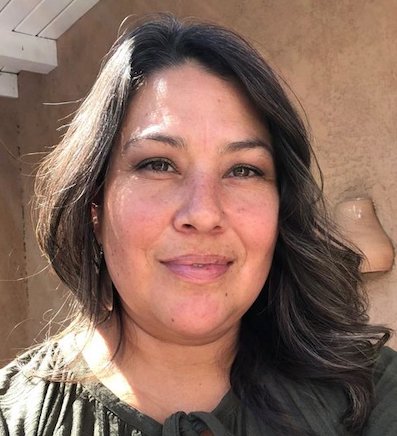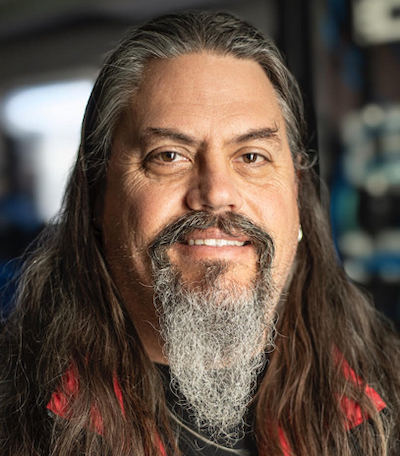
- Details
- By Chez Oxendine
- Economic Development
If tribes want their share of a new $42.5 billion broadband funding program, they’ll need to insist on a seat at state-government tables and be prepared for challenges with up-to-date information on service areas and post-buildout plans, broadband experts say.
The new funding comes via the recently finalized Broadband Equity, Access, and Deployment (BEAD) program, which Biden administration officials call a historic commitment to connect everyone in America to reliable, affordable high-speed internet by the end of the decade. Allocated under the 2021 American Rescue Plan Act, the BEAD funding has been awarded to the governments of all 50 states, Washington, D.C., Puerto Rico and other U.S. territories. Allocations ranged from $27 million for the U.S. Virgin Islands to $3.3 billion for Texas.
What’s at stake for tribes could be an estimated $5 billion in broadband funding for Indian Country, according to some of those experts — more than two-and-a-half times the amount that’s been granted so far via the Commerce Department’s Tribal Broadband Connectivity Program.
Connectivity advocacy group New Mexico Connect Council believes tribes should be able to access that money, but without good policy and rulemaking, tribal applications for subgrants or collaboration with states could be shoved aside by the advance of telecommunications companies’ plans. In particular, state enthusiasm could shrivel in the face of the comparative challenge of reaching especially rural tribal communities, says New Mexico Connect Council chair Kimball Sekaquaptewa.
“We're rural, and we're often in geographically challenging areas. When you're looking at construction costs, those can double; it hasn't been attractive to industry to make those builds,” Sekaquaptewa told Tribal Business News. “That's really the quagmire we've been in.”
 Kimball Sekaquaptewa, New Mexico Connect CouncilThe funding is meant specifically for infrastructure improvements, such as fiber-network extensions into rural areas to allow for more reliable connectivity than strictly wireless connections.
Kimball Sekaquaptewa, New Mexico Connect CouncilThe funding is meant specifically for infrastructure improvements, such as fiber-network extensions into rural areas to allow for more reliable connectivity than strictly wireless connections.
Because BEAD funds flow directly to state governments, those governments must now begin the process of selecting intrastate projects and proposals for funding. An important part of that process is reaching out and receiving comment and consultation from tribes, according to BEAD Program Director Evan Feinman.
“So folks understand, we give money to the states, the states agree with us on a plan to get homes connected to affordable, reliable high speed internet, and then once we agree on that plan, then they take in applications to get every location hooked up,” Feinman told Tribal Business News. “Every state that has federally recognized tribes will be required to engage in tribal consultation. We're going to make sure tribal nations are at the table for these critical conversations.”
State consultations with tribes should help refine often-maligned Federal Communications Commission (FCC) data on which areas are served and unserved, Feinman said. While those coverage maps were recently updated through census data, they’re still not perfect, resulting in lagging federal support for tribal broadband efforts.
Notably, even tribes that have received funding from the Tribal Broadband Connectivity Program are eligible for BEAD funding, assuming the funds don’t conflict or double up on existing projects.
Feinman said he “strongly encouraged” tribes to reach out to state governments to “refine the truth of those maps and the reality of the coverage on the ground.”
“There are two really important touch points for tribes in the next six months,” Feinman said. “They need to be involved with the plan for how states are going to conduct those challenge processes, and they need to speak up and share with us ways in which the FCC maps fail to communicate what’s true and isn’t true about providers’ coverage.”
The story the map is telling
It would take about $4.5 billion to bring fiber to every single household in New Mexico, according to Sekaquaptewa (Hopi), who also serves as the chief technology officer at the Santa Fe Indian School. That makes the $675 million that New Mexico will receive under BEAD a good start for the state and for tribes, she said.
“There's a lot of opportunity here, and we are certainly trying to maximize tribal success,” Sekaquaptewa told Tribal Business News. “We have 23 tribes and each one of them has unique situations, but they're largely unserved, so they've been highly eligible, which is great.”
Sekaquaptewa said tribes’ success will depend largely on their ability to effectively communicate the areas of their reservations or pueblos that are served or unserved. Presenting their own updated and accurate mapping data, rather than relying on existing data or letting large telecommunications firms dictate the maps, will be a key to securing BEAD funding, she said.
Those telecom firms, Sekaquaptewa said, could declare areas near or on tribal reservations to be already served, and that could inhibit tribes seeking funding to build their own connectivity networks. That’s happened before during FCC auctions, such as when Elon Musk’s satellite internet company attempted to claim territory on tribal reservations.
Only later reversals by the FCC stopped those claims, and there’s no telling what telecoms will do under the flood of BEAD funding, Sekaquaptewa said.
“Tribes need to be cognizant of what story that map is telling,” she said. “We need to require tribal consent to claim spectrum (on tribal lands).”
At Washington State’s Department of Commerce, the tribal consultation and data-gathering process is already underway, says Mark Vasconi, the state’s broadband office director.
Washington received roughly $1.2 billion in BEAD funding, but launched tribal consultation efforts throughout the state prior to being notified of their award, Vasconi said. That’s because, per their most recent FCC maps, there are some 240,000 unserved residents in the state, and Vasconi wagers the “highest density” connectivity deserts are on tribal lands.
“The five tribes in Eastern Washington have over the years been particularly underserved, and then on the Olympic peninsula, (they) are particularly remote, starting with the Makah on the northern end of the peninsula and then going south along the Pacific Coast to the Hoh Tribe,” Vasconi told Tribal Business News. “There are tribal reservations there that are remote, and there’s not much of an economic base in those particular reservations.”
Oklahoma, which received roughly $797 million in BEAD allocations, had even more unserved households, owing to the state’s large rural regions, according to Oklahoma Broadband Office Executive Director Mike Sanders.
The state’s FCC data indicated more than 700,000 Oklahomans without a consistent and serviceable internet connection, Sanders said. More than 96% of those unserved resided outside of the counties Tulsa and Oklahoma City are located. The state plans to launch a connectivity map in August to help prioritize those most in need of service. The goal, Sanders said, was to bring 95% of Oklahomans online within the next five years.
“Broadband expansion is this generation’s equivalent of rural electrification of the 1930s and the interstate highway system of the 1950s. It is a game changer for Oklahoma’s economy – especially in rural areas,” Sanders said. “Broadband access and adoption in rural areas is directly tied to increased jobs and population growth, increased new businesses, higher real estate values and lower jobless rates.”
Oklahoma is home to 39 federally recognized tribes, and so far, the state has met with 31 of them to discuss potential BEAD subgrants and distributions, with plans in process for meeting with the remainder, Sanders said. Tribes have been designated as eligible subgrantees with plans for outreach and technical assistance on grant applications, he added.
“Oklahoma’s Tribal Governments play a vital role in the Oklahoma Broadband Office’s mission to expand access to affordable and reliable high-speed internet service throughout the state,” Sanders said. “Respectful and collaborative relationships with the 39 sovereign nations located within the state are essential to the success of our mutual efforts.”
A good degree of interest
Vasconi largely echoed the sentiment for Washington State’s early efforts toward tribal consultation, as well as leveling the playing field for subgrant applicants in the months ahead. Funding applicants will be required to demonstrate that they will coordinate with tribal governments, and the state is encouraging tribes to apply for grants on their own, as well.
So far, tribes are displaying a “good degree of interest,” Vasconi said.
“I think what we’re hearing is to make certain to continue the outreach efforts. That’s important, I think,” Vasconi said. “I think the Washington State Broadband office has not established the kind of outreach record we would like, so starting with BEAD and moving forward, that's a priority and it's a priority for tribal members and nations as well.”
Tribes have also requested representation on review panels, and consideration on scoring criteria for whether or not a proposed project will include tribal connectivity as a component, Vasconi said. That could be crucial for ensuring fairness when, say, a tribe and adjoining county apply for funding that could end up covering the same service area.
“I think it’s essential to have a tribal voice there,” Vasconi said.
 Matthew Rantanen, Golden State NetworkTribal consultations haven’t gotten underway in every state, says Matthew Rantanen, vice president for Golden State Network, a project of the Corporation for Education Network Initiatives in California.
Matthew Rantanen, Golden State NetworkTribal consultations haven’t gotten underway in every state, says Matthew Rantanen, vice president for Golden State Network, a project of the Corporation for Education Network Initiatives in California.
While California has spoken with roughly 70 of the state’s 109 federally recognized tribes, by Rantanen’s count, other states, such as Idaho and South Dakota, have been less proactive about the process, he claims.
However, building relationships with state governments is the most important step toward accessing the funding, Rantanen said. States have to consult with the tribes, he added, but there are no set-asides or obligations in the BEAD funding opportunity.
“The state has to consult with tribes; they don't have to pay them. That's what we're hearing across the board — the state has to consult with tribes on the process, but nowhere does it say tribes have to be paid,” Rantanen said. “The relationship with the state and indicating to the state and getting them to build a process where tribes can be subgrantees of that award seems to me the only path.”
Sekaquaptewa agreed that state relationships are essential, especially ahead of a process that has historically not gone well for Native communities trying to maintain control of new infrastructure and have a say in how their lands play into connectivity build outs by larger telecoms. She points to FCC spectrum and connectivity auctions that awarded large companies expansive swaths of territory without any tribal consent.
Eligible, but viable?
Tribes will also contend with NTIA requirements built into the BEAD funding opportunity before it ever gets to states. Sekaquaptewa pointed to a 25% matching grant requirement built into BEAD’s overall rules as an example of something that could prove difficult to achieve for tribal applications.
“The tribes are eligible, but are we viable? That's the question,” Sekaquaptewa said. “The BEAD is very prescriptive coming down … 70% of scoring criteria are defined by NTIA, so when the states define these programs, how do we make this realistic, and not just a pipe dream? I'm not saying tribes shouldn't try — tribes should definitely try to benefit from BEAD, but we really have to engage with the state process.”
That means having good information and explanations for tribes who don’t have cash-on-hand for matching grants, or who may need larger grant awards to account for especially rural communities in geographically challenging areas. It also means building capacity to not only construct approved projects, but maintain them.
“It’s a bigger goal than just infrastructure,” Sekaquaptewa said. “We also as tribes need to remember we need to develop our tribal capacity in the telecom and broadband space. It's a new area of expertise, because we haven't been invited to the table before.”
For tribes that do partner up with private companies, Sekaquaptewa encouraged them to advocate for owning their own network, or at least retaining primary control in the partnership.
Digital sovereignty, she said, relies on tribes holding the reins on their own connectivity efforts.
“What you don't do is become customers,” Sekaquaptewa said. “I might need a managing partner for a number of years until you teach us what we need to know, but (we) don't lose control of the ownership and the infrastructure.”
